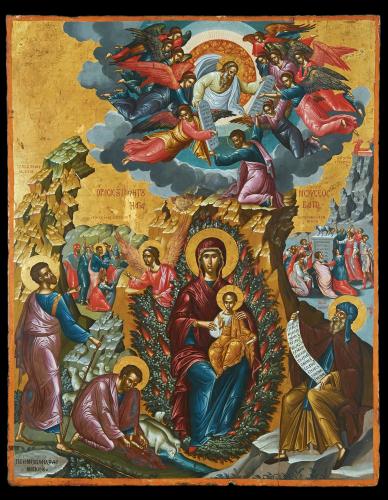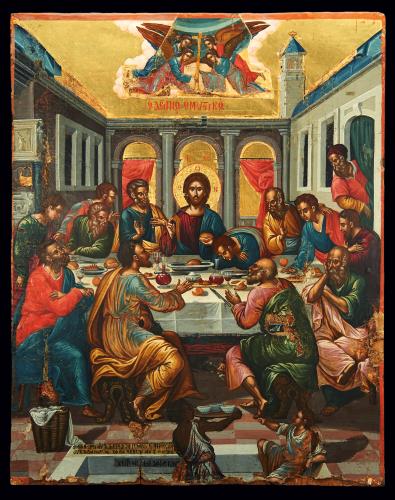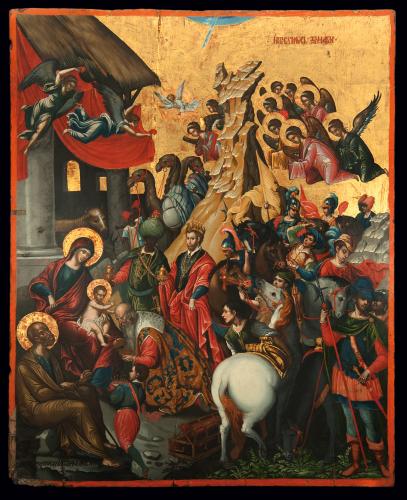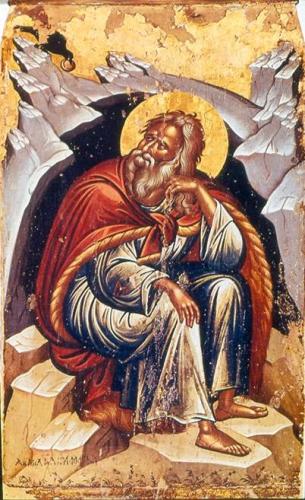
EPHORATE OF ANTIQUITIES OF HERAKLION
Digital Interactive Educational and Promotional Services for the Museum of St. Catherine in Heraklion
THEMATIC SECTIONSReturn to previous section >
The painter Michael Damaskenos
Candia, birth 1530-35, †1592/93.
Michael Damaskenos is one of the most important Greek
painters of the Post-Byzantine period. He was born in Candia between 1530 and
1535. He was probably an apprentice in the workshop of the famous painter
Theophanis Stelitzas or Bathas. His mature artistic period started between 1555
and 1565. Around 1567 he flew to Venice (as did Domenikos Theotokopoulos),
where many famous painters, such as Titiano, Paolo Veroneze and Tintoretto,
where active. In 1569 he moved to Messina, Sicily, where, in three years, he produced
a number of remarkable works. He returned to Venice in 1574 and worked for the
Greek-Orthodox Brotherhood until 1583. Among other, he painted many icons for
the sanctuary and the iconostas of the Greek church of Saint George, some of
which have survived. He collected sketches of famous painters, such as the
mannerist Parmigianino, which he sold to the famous sculptor Alessandro
Vittoria in 1581. He was related to the painter Jacopo Palma Jr. and probably to
the artistic cycle of Tintoretto. He returned in Candia in 1583 and continued his
work as a “master”, using the galleries of the church of Saint George Mouglenos
as his workshop. There he produced many
of his famous works, which are found today in Heraklion and Corfu. The last
references to his action date back in 1591, when he painted the icon of the
First Ecumenical Council, now in the Museum of St. Catherine, and two large
paintings for equal catholic churches in Candia. He died probably from the
plague in 1592. After his death, his sketches became valuable, due to his fame.
*
From the text of M. Konstantoudaki-Kitromilides, “Μιχαήλ
Δαμασκηνός
του
Γεωργίου” in
the Catalogue of the Museum of St. Catherine, Heraklion 2014.






 The work of Michael Damaskenos
The work of Michael Damaskenos